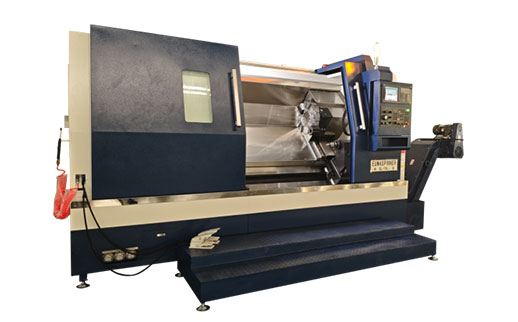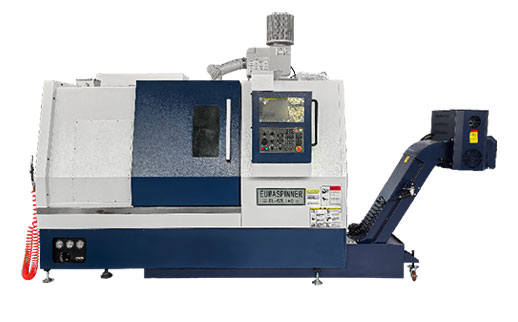In the fast-paced world of manufacturing, turning lathes have long been the backbone of precision machining, shaping raw materials into critical components for industries ranging from automotive to aerospace. As global demand for efficiency, accuracy, and sustainability continues to rise, the future of turning lathe technology is undergoing a remarkable transformation—driven by digitalization, automation, and advanced material science. Industry experts predict that these innovations will not only redefine production processes but also unlock new possibilities for manufacturers worldwide.
One of the most significant shifts in the future of turning lathes is the integration of the Internet of Things (IoT). Modern turning lathes are now equipped with sensors and connectivity features that enable real-time data collection and analysis. These smart machines can monitor key metrics such as cutting speed, tool wear, temperature, and vibration, transmitting data to cloud-based platforms for instant processing. For manufacturers, this means enhanced predictive maintenance—potential issues can be identified and resolved before they lead to costly downtime. For example, a leading machinery manufacturer recently launched an IoT-enabled turning lathe that reduces unplanned maintenance by 35% and extends tool life by 20%, significantly boosting overall productivity.
The adoption of IoT in turning lathes also facilitates seamless integration with other smart factory systems, such as Enterprise Resource Planning (ERP) and Manufacturing Execution Systems (MES). This interconnected ecosystem allows for end-to-end visibility of the production cycle, from raw material intake to finished product delivery. As a result, manufacturers can make data-driven decisions, optimize production schedules, and reduce waste—key factors in staying competitive in today’s global market.
Automation is another cornerstone of the future of turning lathe technology. Traditional turning operations often require skilled operators to monitor and adjust machines, a process that is both time-consuming and prone to human error. However, the latest turning lathes are incorporating robotic arms, automated loading/unloading systems, and computer numerical control (CNC) advancements to minimize human intervention.
Collaborative robots, or cobots, are increasingly being paired with turning lathes to handle repetitive tasks such as part loading, unloading, and inspection. These cobots are designed to work safely alongside human operators, freeing up skilled workers to focus on more complex tasks like programming and quality control. A recent case study from a European automotive parts manufacturer showed that integrating cobots with turning lathes increased production output by 25% while reducing labor costs by 15%.
In addition to cobots, advanced CNC systems are revolutionizing turning lathe operations. Modern CNC turning lathes feature high-speed processing capabilities, intuitive user interfaces, and advanced programming software that supports 3D modeling and simulation. This allows manufacturers to create complex parts with tight tolerances more efficiently, reducing setup time and minimizing material waste.
As the manufacturing industry increasingly prioritizes sustainability, the future of turning lathes is also focusing on eco-friendly innovations. Manufacturers are developing turning lathes with energy-efficient motors, reduced lubricant consumption, and recyclable materials to minimize their environmental impact.
Energy-efficient turning lathes use variable-frequency drives (VFDs) and advanced motor technologies to reduce power consumption by up to 30% compared to traditional models. This not only lowers operating costs for manufacturers but also reduces carbon emissions. Additionally, new lubrication systems, such as minimum quantity lubrication (MQL), are being adopted to replace traditional flood lubrication. MQL uses a fine mist of oil and air to lubricate the cutting tool, reducing lubricant usage by 95% and eliminating the need for costly waste disposal.
Another sustainable innovation in turning lathe design is the use of lightweight, recyclable materials such as aluminum alloys and composite materials. These materials not only reduce the overall weight of the machine, making it easier to transport and install, but also ensure that the machine can be recycled at the end of its lifecycle, reducing landfill waste.
The future of turning lathes is also being shaped by the development of advanced materials, such as high-strength alloys, composites, and ceramics. These materials offer superior properties such as high temperature resistance, corrosion resistance, and strength-to-weight ratios, making them ideal for use in industries like aerospace, defense, and medical device manufacturing. However, they also present unique challenges for machining, as they are often harder and more abrasive than traditional materials.
To address these challenges, manufacturers are developing turning lathes with advanced cutting tools and machining strategies. For example, cubic boron nitride (CBN) and diamond-coated cutting tools are being used to machine high-strength alloys, while ultrasonic-assisted machining (UAM) technology is being integrated into turning lathes to improve the machining of composites. UAM uses high-frequency vibrations to reduce cutting forces and tool wear, allowing for faster and more efficient machining of difficult-to-cut materials.
The future of turning lathe technology is bright, with innovations in IoT, automation, sustainability, and advanced materials set to transform the manufacturing industry. As these technologies continue to evolve, manufacturers who embrace them will be well-positioned to meet the growing demands of the global market—delivering higher-quality products, reducing costs, and minimizing their environmental impact.
Whether it’s a small-scale workshop or a large-scale production facility, investing in the latest turning lathe technology is no longer an option but a necessity. As industry leaders continue to push the boundaries of what’s possible, the turning lathe will remain a vital tool in the manufacturing landscape—driving innovation and progress for years to come.lf you want to know more about CNC Turning Lathe, you can contact EUMA Machinery, we can provide effective help



GET A QUOTE